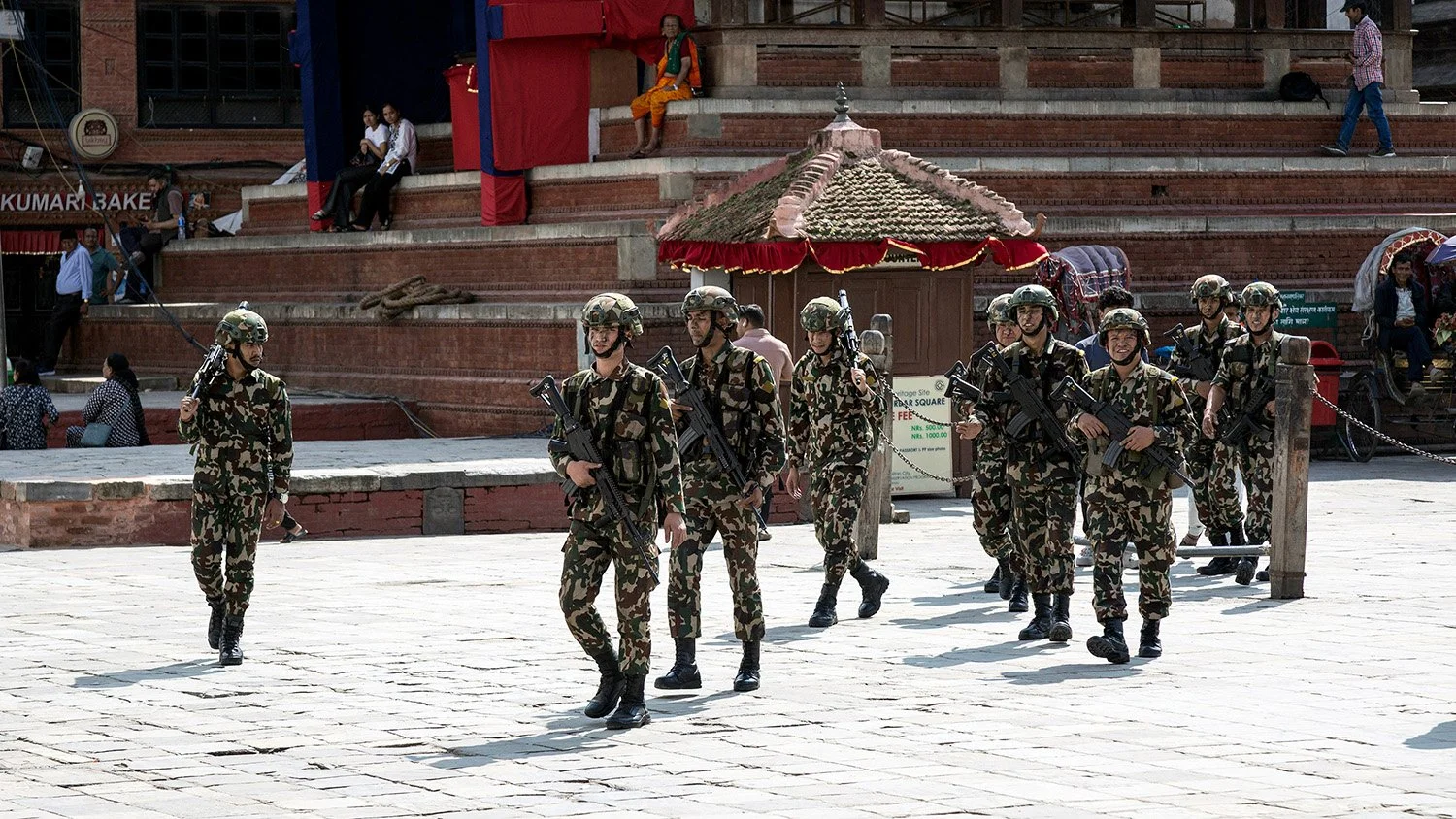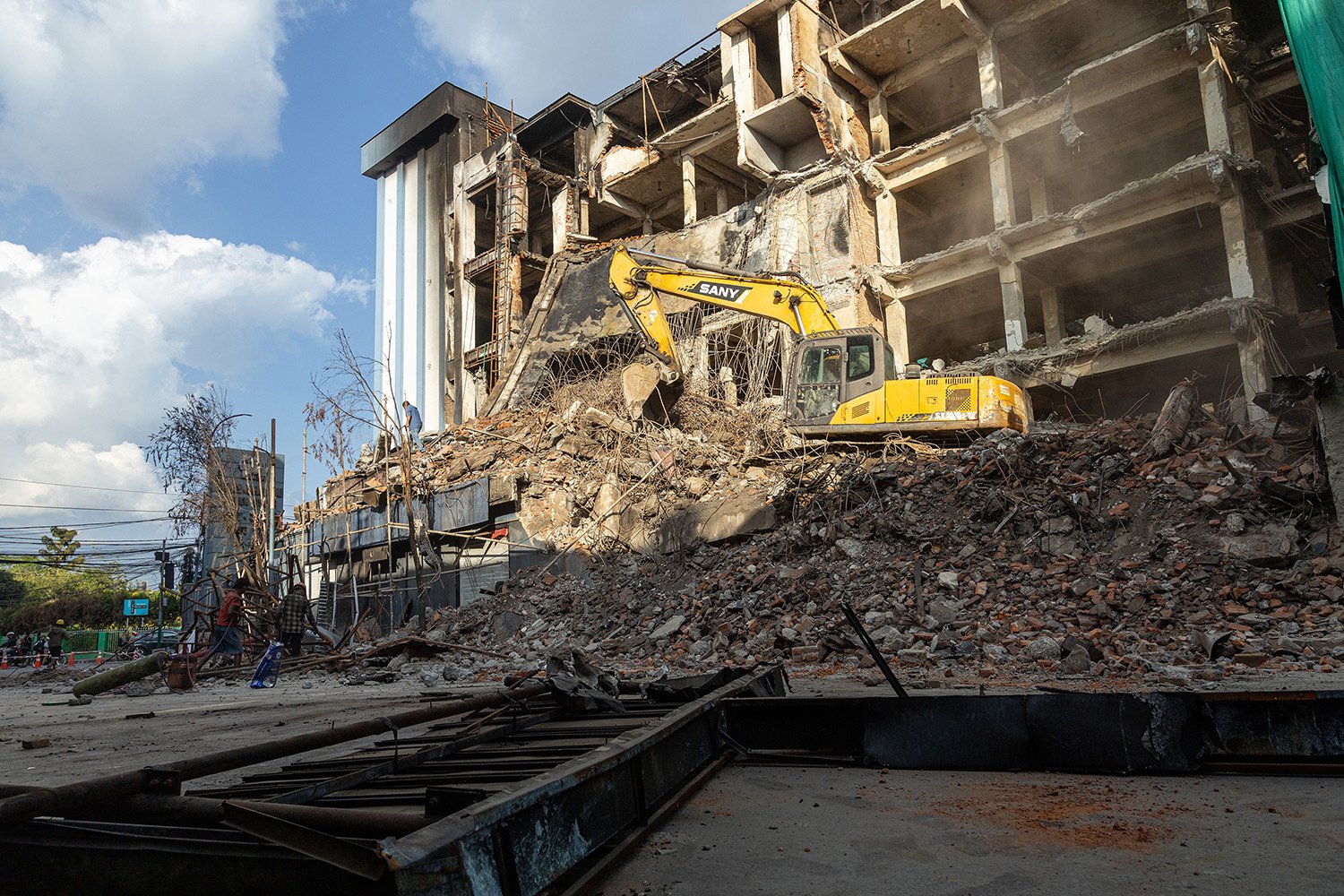In the Heart of the Uprising: Two days in Kathmandu
The acrid smoke of tear gas burns my eyes. Protesters' cries fill the air, police gunfire echoes between buildings. Before me, thousands of young people besiege Parliament. I'm in Kathmandu, camera in hand, and history is writing itself before my eyes.
We often see historical events as sterile facts from distant times, outcomes of variables historians will clarify. We read about them in books, printed on front pages. But history isn't that—history is essentially a zoom into one of many past moments whose impact transforms what follows. It's a living record of human interactions inseparable from space and time. And when you're inside it, when you breathe it, everything changes. Because you are there.
How I Got There
I was in Kathmandu on vacation, searching for myself. I wanted to discover local traditions and see Everest with my own eyes—a period of rest, I thought.
About a week earlier, social media had been blocked. I hadn't paid much attention. On the morning of September 8th, I was having breakfast at my usual café when the barista told me: "There's a protest at Baneshwor Place."
I didn't even know where that was—I'd only been in the country two weeks. But something pushed me to go. I wanted to capture the raw emotions of a demonstration. I had no idea what I was walking into.
The Context: A Nation in Revolt
Nepal is a young nation, still transitioning from a centuries-old monarchy. Political corruption is endemic, rooted in a system struggling to find balance. That morning, thousands of young people—Generation Z, the generation painted as inept and lost in social media—had gathered before Parliament.
They had long-ignored grievances. They wanted to give voice to those forgotten by a distant political class. The social media blackout was the last straw—they could no longer communicate with families abroad, no longer organize, no longer exist in the way their generation exists.
September 8th: The First Day
I arrive at Baneshwor Place and find myself facing a human mass. Thousands of people, mostly young, converging on Parliament. The atmosphere is electric.
I begin shooting photos, trying to capture faces, expressions, the determination in their eyes. Then I hear the first shots. Tear gas. Acrid smoke invades the streets. My throat burns, my eyes water. The crowd doesn't stop.
Police respond with rubber bullets, then with something heavier. I hear more shots, different ones. Not just tear gas anymore. The crowd fragments into small groups, some covering their faces with wet shirts. Others throw stones. Tension explodes into violence.
I can't forget the acrid smell of smoke grenades, the burning in my respiratory tract and on my skin. The thick hail of stones flying through the air. The rage visible on people's faces—a visceral anger, accumulated over years, finally finding release.
I keep shooting. I must document. It's all I can think: I must document.
September 9th: The Second Day
I return the next day. No longer by chance. This time I know what I'm looking for: I want to document history as it's written.
The situation has worsened. The night before, clashes erupted throughout the city. Police stations attacked. Government buildings set ablaze. The next day the streets are a battlefield. Broken glass, debris everywhere, smoke rising from various points in the city.
I see the army deployed in the streets. Curfew has been announced. But protesters don't stop. The anger is too great, too deep. They continue converging on symbols of power.
I document everything. Improvised barricades. Young people organizing. Elders bringing water to protesters. Mothers searching for their children in the chaos. It's chaos orchestrated by desperation and hope.
The Awakening
When I returned to my photography course, I thought I'd just taken some "cool" photos to show my professor for technical critique. I expected feedback on composition, exposure, lighting.
Instead, my professor and classmates informed me that 19 people had died.
Nineteen.
In that moment I understood. These photos weren't just "cool scenes" to show. They weren't exercises in composition or light. They were the physiognomy of a historical event. They were testimonies. They were evidence of broken lives, justified rage, a people saying enough.
Being there, in the middle of those events, leaves a sense of bewilderment impossible to communicate to those who weren't there. It's the absurdity of finding yourself in the right place—or wrong place—at the right time. It's the sudden responsibility of having documented something bigger than yourself.
What Remains
Several weeks have passed since those two days in Kathmandu. My photos exist. History has been written. Nineteen families mourn their loved ones.
I went to Nepal searching for myself, to see Everest, to discover ancient traditions. Instead I discovered something unexpected: hope.
That generation the world paints as lost in social media, incapable of real connections, was there in the streets. With real bodies, real voices, real rage. Yes, the protest was born online—the social media blackout proves it. But it materialized in flesh and blood, in thousands of young people willing to risk everything for a better future.
This experience left me with a sense of trust in future generations. A renewed sense of real human social connection that goes far beyond the artificial mimicry on social networks, even though it was born there. Social media is just the tool—the substance is in the people.
And I understood that when you have a camera in hand at the moment history is being written, you have a responsibility: to tell it. To witness that behind the numbers, behind the statistics, there are faces, voices, and a desire for change that no screen can contain.
*All photographs © Bruno Sergio Bertini. These images document the September 8-9, 2025 protests in Kathmandu, Nepal, where I witnessed history unfold in real time. This work represents my commitment to documenting truth and giving voice to those fighting for change.








